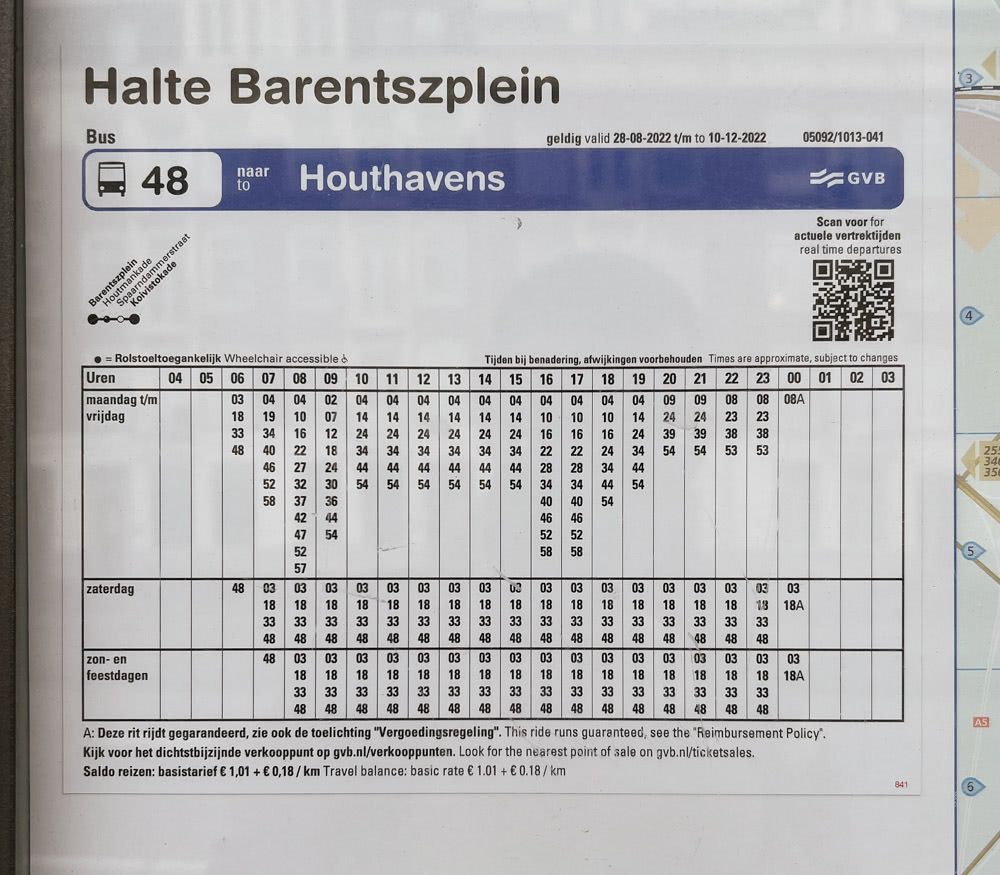The design of bus time tables: Amsterdam vs Malta
You can tell how much attention a city or a country pays to its public transport from the design of its bus time tables. A recent trip to Malta and a brush with public transport there made me appreciate ones in Amsterdam even more.
Let’s take a closer look.
 A bus time table in Amsterdam
A bus time table in Amsterdam
The header clearly shows you the name of the stop, the mode (since some stops service bus and trams), the route and the end destination. A mini line map shows all the stops current stop onwards and their accessibility by wheelchair. There is even a QR code that you can scan to get live timings for buses departing from that stop.
The main body is divided into three sections - one for regular working days, one for Saturdays and one for Sundays and public holidays. The sections share a common header with 24 columns - one for each hour. The minutes are listed under the respective hours. Not only is this easy to scan, it also acts like a histogram that shows which hours have the most frequent service at a glance.
 The minutes double up as a histogram
The minutes double up as a histogram
We use 24h time (aka ‘military time’) in the Netherlands so it does keep the design compact by not having to designate each hour as AM or PM.
The footer has miscellaneous information including costs.
Contrast this with the time tables in Malta.
 A bus time table in Malta
A bus time table in Malta
While the header clearly tells you the bus route, the destination and the current stop, it doesn’t show you other stops along the route.
The body is about as easy to scan as a busy spreadsheet. Sure, you have three columns for weekdays, Saturdays and Sundays/public holidays but the use of alternating grey and white color for each column is about the only concession they make for readability. Each of these columns are further divided into two columns listing the arrival times of the bus from earliest to latest. You have to scan this list carefully to locate the hour you are interested in. You don’t get a sense of which hours have the most frequent service and which ones have none. You can however look at time tables for two separate routes side by side and easily tell which is serviced more frequently by looking at the length of the tables.
Bus stops in Amsterdam increasingly have a display that shows live timings of buses running on that route. That and the ubiquity of internet-connected smartphones makes me wonder if these printed timetables would soon become relics that you’d only find in a museum.